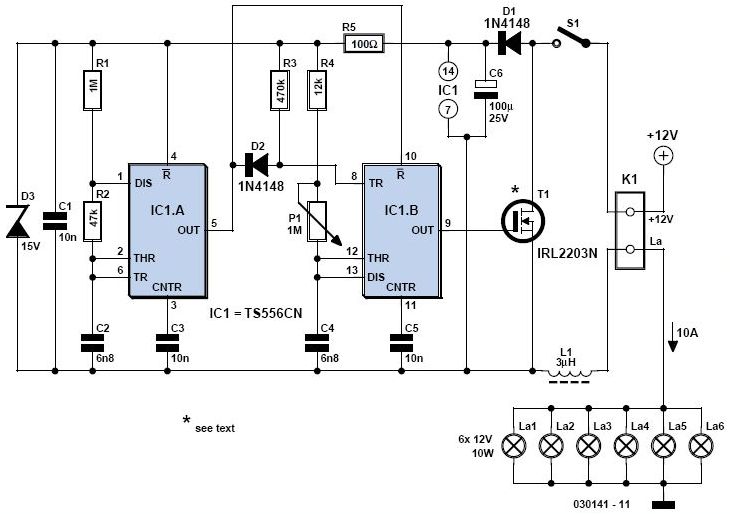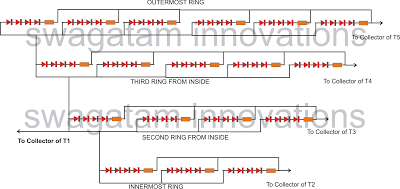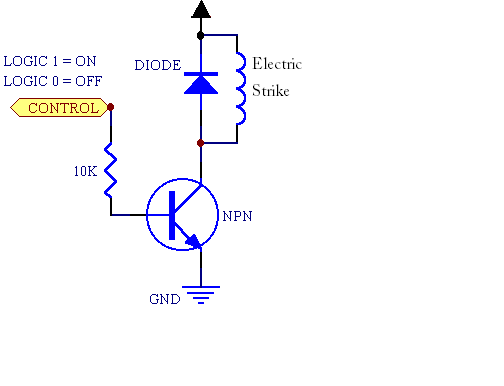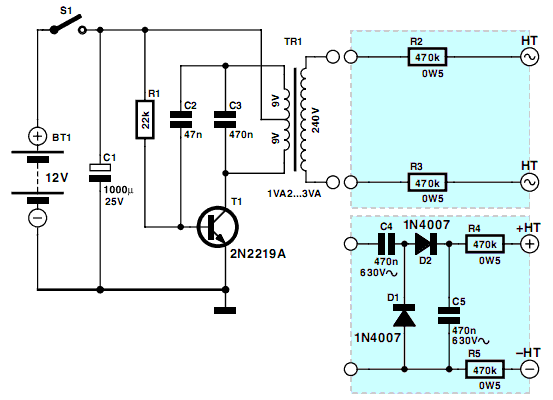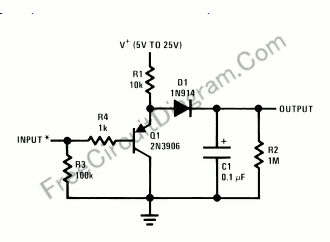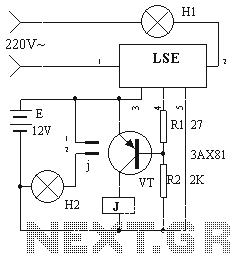
Constant Voltage measuring circuit

The circuit for bridge measurements is straightforward, as illustrated in the figure. The sensor bridge drive voltage can be adjusted between +4V and +10V, depending on the specific requirements of the sensor. Two fixed gain options of 333.3 and 500 are available, with active low outputs. The continuous gain can be adjusted from 100 to 5000 based on the RF/R ratio. The output voltage is set at 10V.
The described circuit operates as a bridge measurement system, utilizing a sensor bridge configuration to convert physical parameters into electrical signals. The adjustment of the sensor bridge drive voltage between +4V and +10V allows for flexibility in accommodating various sensor types and their specific output characteristics. This range ensures that the sensor operates within its optimal range for accurate readings.
The circuit includes two fixed gain settings of 333.3 and 500, which are crucial for amplifying the sensor's output signal. The choice of gain is determined by the application requirements, allowing for precise adjustments based on the sensor's characteristics. The active low output configuration indicates that the output signal will be low when the input exceeds a certain threshold, which is often useful in digital interfacing scenarios.
Moreover, the circuit supports continuous gain adjustment from 100 to 5000 by varying the RF/R ratio. This feature is particularly advantageous in applications requiring dynamic signal amplification, enabling the system to adapt to different measurement conditions or sensor outputs. The output voltage of 10V provides a robust signal that can be easily interfaced with subsequent processing stages, such as analog-to-digital converters or microcontrollers.
Overall, this bridge measurement circuit is designed to provide a reliable and flexible solution for various sensor applications, ensuring accurate signal processing and adaptability to different operational requirements.1832 for bridge measurements, the external circuit is very simple, as shown in FIG. Belly adjust sensor bridge drive voltage ( feet), the adjustment range is +4 a + 10V, based on the sensor to determine the specific value of the actual need. Two fixed gain 333.3,500 pin ?, ? then active low, from 100 to 5000 continuous gain adjustment is determined by the a, foot RF/R. Output voltage is 10V.
The described circuit operates as a bridge measurement system, utilizing a sensor bridge configuration to convert physical parameters into electrical signals. The adjustment of the sensor bridge drive voltage between +4V and +10V allows for flexibility in accommodating various sensor types and their specific output characteristics. This range ensures that the sensor operates within its optimal range for accurate readings.
The circuit includes two fixed gain settings of 333.3 and 500, which are crucial for amplifying the sensor's output signal. The choice of gain is determined by the application requirements, allowing for precise adjustments based on the sensor's characteristics. The active low output configuration indicates that the output signal will be low when the input exceeds a certain threshold, which is often useful in digital interfacing scenarios.
Moreover, the circuit supports continuous gain adjustment from 100 to 5000 by varying the RF/R ratio. This feature is particularly advantageous in applications requiring dynamic signal amplification, enabling the system to adapt to different measurement conditions or sensor outputs. The output voltage of 10V provides a robust signal that can be easily interfaced with subsequent processing stages, such as analog-to-digital converters or microcontrollers.
Overall, this bridge measurement circuit is designed to provide a reliable and flexible solution for various sensor applications, ensuring accurate signal processing and adaptability to different operational requirements.1832 for bridge measurements, the external circuit is very simple, as shown in FIG. Belly adjust sensor bridge drive voltage ( feet), the adjustment range is +4 a + 10V, based on the sensor to determine the specific value of the actual need. Two fixed gain 333.3,500 pin ?, ? then active low, from 100 to 5000 continuous gain adjustment is determined by the a, foot RF/R. Output voltage is 10V.
